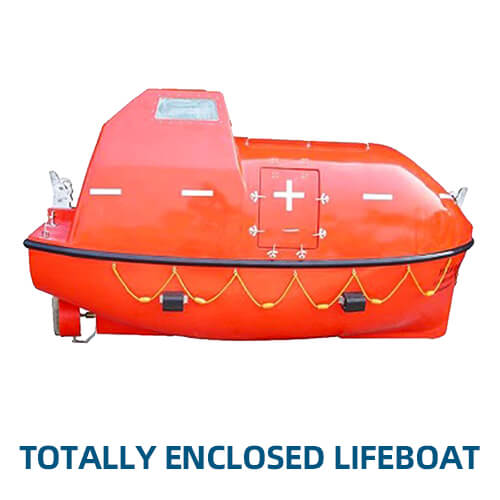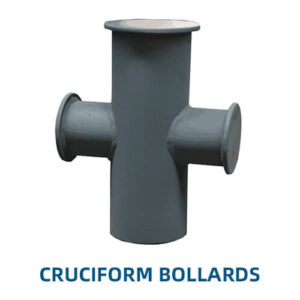Key Features of Totally Enclosed Lifeboats:
- Design and Construction:
- Fully Enclosed Structure: TELBs have a completely sealed hull and canopy, protecting occupants from wind, rain, waves, and fire. The enclosure also helps prevent water ingress, ensuring the lifeboat remains buoyant and stable.
- Marine-Grade Materials: Constructed from strong, durable materials such as fiberglass-reinforced plastic (FRP) or steel, designed to withstand impacts, fire, and harsh marine environments.
- Self-Righting Capability: Many TELBs are designed to be self-righting, meaning they can return to an upright position if capsized, ensuring the safety of those inside.
- Safety and Equipment:
- Emergency Equipment: Equipped with essential safety gear, including life jackets, first aid kits, distress signals (flares), thermal protective aids, and emergency rations.
- Fire Protection: TELBs are often equipped with fire-retardant materials and may include water spray systems to cool the exterior and protect occupants from heat and flames.
- Air Supply: Some TELBs are fitted with an air supply system that provides breathable air for a certain period, useful in situations involving fire or toxic gases.
- Ballast System: A ballast system is often included to improve stability and self-righting capabilities.
- Performance Characteristics:
- All-Weather Protection: The fully enclosed design offers complete protection from adverse weather conditions, including storms and high seas.
- Buoyancy and Stability: Designed to remain buoyant and stable even in rough sea conditions, ensuring a safe and controlled evacuation.
- Engine Power: TELBs are typically powered by an inboard diesel engine, providing the ability to navigate away from danger zones and reach safe locations.
- Deployment Mechanism:
- Gravity or Davit-Launched: TELBs can be launched using a gravity davit system, which lowers the lifeboat into the water, or by free fall, where the lifeboat slides down a ramp into the sea.
- Quick Release Mechanism: The lifeboat is equipped with a quick release mechanism that allows it to be deployed rapidly during an emergency.
- Applications:
- Commercial Shipping: Used on large cargo vessels, tankers, and passenger ships where comprehensive protection during evacuation is required.
- Offshore Platforms: Essential for oil and gas platforms, providing a safe means of evacuation in the event of fire, explosion, or severe weather.
- Maintenance and Inspections:
- Regular Inspections: TELBs require regular inspections to ensure all systems are operational and compliant with safety standards.
- Engine and Equipment Maintenance: The engine and all onboard equipment should be maintained according to the manufacturer’s guidelines to ensure readiness during an emergency.
- Regulations and Standards:
- International Compliance: Must comply with international maritime safety regulations, including those set by the International Maritime Organization (IMO) and the SOLAS (Safety of Life at Sea) Convention.
- Certification: The lifeboat should be certified by relevant maritime authorities, confirming that it meets all necessary safety and performance standards.
Advantages of Totally Enclosed Lifeboats:
- Maximum Protection: Offers full protection from the elements, fire, and hazardous environments, ensuring the safety and well-being of occupants.
- Enhanced Safety Features: Includes advanced safety systems such as self-righting capabilities, fire protection, and air supply systems.
- Navigational Control: Powered by an engine, allowing the lifeboat to move away from danger zones and navigate to safety.
Considerations for Totally Enclosed Lifeboats:
- Cost: TELBs are more expensive than open or partially enclosed lifeboats due to their advanced features and materials.
- Complexity: Requires more maintenance and regular checks to ensure all systems, including the engine, are in working order.
Totally Enclosed Lifeboats are a crucial safety feature for maritime and offshore operations where the risk of severe weather, fire, or hazardous conditions is present. They provide comprehensive protection and advanced safety features, making them an essential component of emergency preparedness and evacuation plans.






